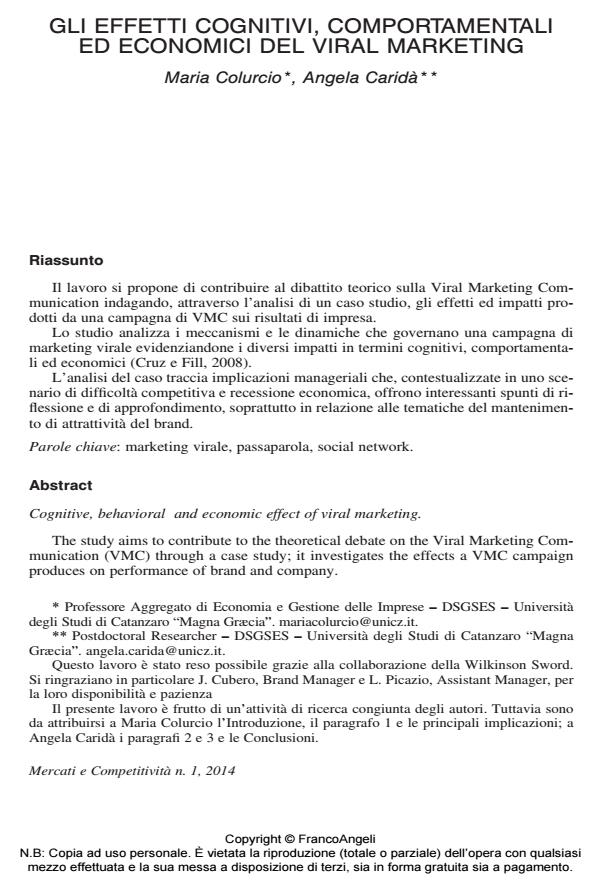Gli effetti cognitivi, comportamentali ed economici del viral marketing
Titolo Rivista MERCATI E COMPETITIVITÀ
Autori/Curatori Maria Colurcio, Angela Caridà
Anno di pubblicazione 2014 Fascicolo 2014/1
Lingua Italiano Numero pagine 17 P. 85-101 Dimensione file 666 KB
DOI 10.3280/MC2014-001005
Il DOI è il codice a barre della proprietà intellettuale: per saperne di più
clicca qui
Qui sotto puoi vedere in anteprima la prima pagina di questo articolo.
Se questo articolo ti interessa, lo puoi acquistare (e scaricare in formato pdf) seguendo le facili indicazioni per acquistare il download credit. Acquista Download Credits per scaricare questo Articolo in formato PDF

FrancoAngeli è membro della Publishers International Linking Association, Inc (PILA)associazione indipendente e non profit per facilitare (attraverso i servizi tecnologici implementati da CrossRef.org) l’accesso degli studiosi ai contenuti digitali nelle pubblicazioni professionali e scientifiche
Il lavoro si propone di contribuire al dibattito teorico sulla Viral Marketing Communication indagando, attraverso l’analisi di un caso studio, gli effetti ed impatti prodotti da una campagna di VMC sui risultati di impresa. Lo studio analizza i meccanismi e le dinamiche che governano una campagna di marketing virale evidenziandone i diversi impatti in termini cognitivi, comportamentali ed economici (Cruz e Fill, 2008). L’analisi del caso traccia implicazioni manageriali che, contestualizzate in uno scenario di difficoltà competitiva e recessione economica, offrono interessanti spunti di riflessione e di approfondimento, soprattutto in relazione alle tematiche del mantenimento di attrattività del brand.
Parole chiave:Marketing virale, passaparola, social network.
Maria Colurcio, Angela Caridà, Gli effetti cognitivi, comportamentali ed economici del viral marketing in "MERCATI E COMPETITIVITÀ" 1/2014, pp 85-101, DOI: 10.3280/MC2014-001005